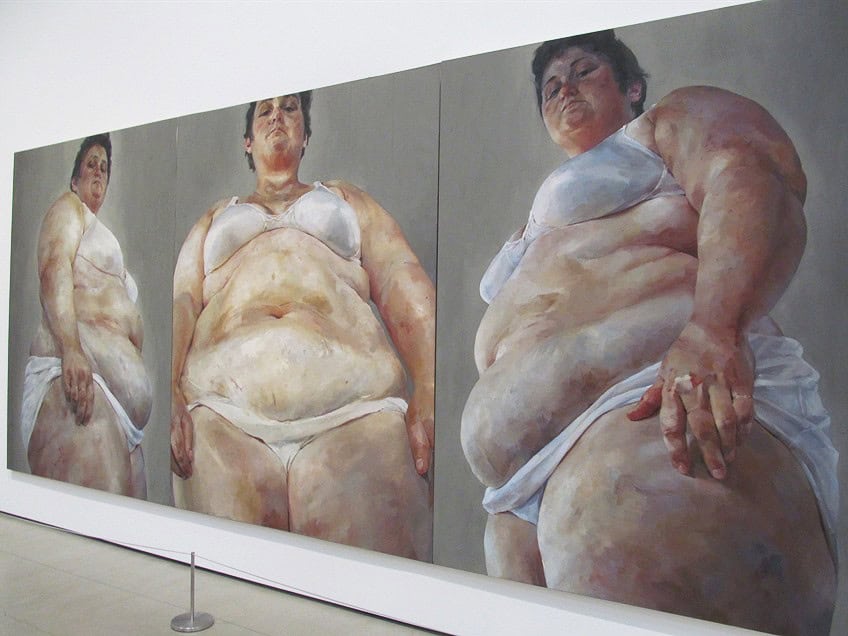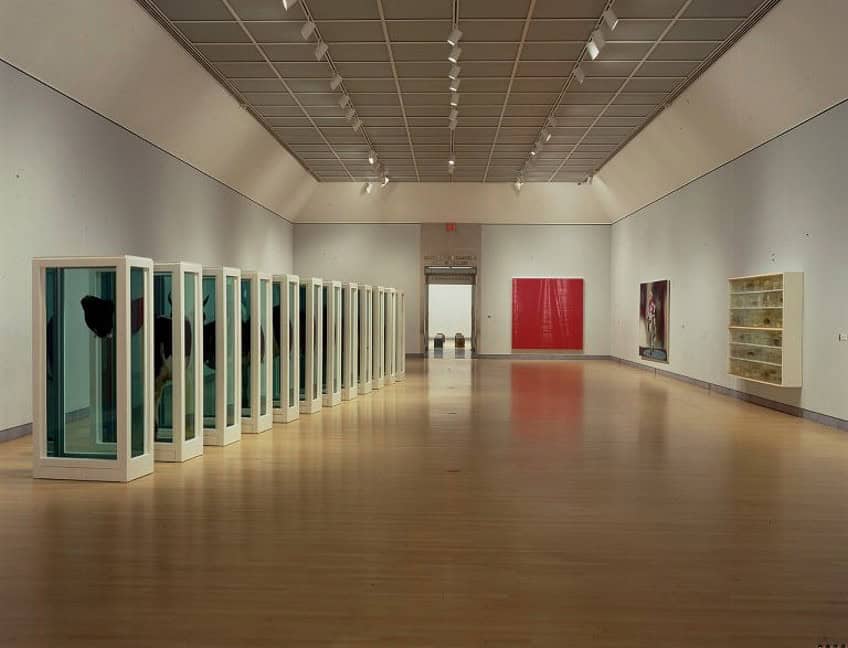Young British Artists – The Avant-Garde Spirit of the YBAs
The Young British Artists (YBAs) emerged in the late 1980s and early 1990s, revolutionizing the contemporary art scene with their provocative and innovative works. A collective of London-based artists, the YBAs were known for their use of unconventional materials, shock tactics, and entrepreneurial spirit. Their art often challenged traditional aesthetics and explored themes of identity, consumerism, and mortality. Key figures such as Damien Hirst, Tracey Emin, and Sarah Lucas became prominent through high-profile exhibitions like the 1988 Freeze show organized by Hirst. The YBAs’ rise was significantly supported by art dealer Charles Saatchi, whose patronage helped propel them to international fame. Their influence reshaped the global art market and left a lasting impact on contemporary art practices.
Key Takeaways
- The YBAs emerged in the late 1980s and included artists like Damien Hirst and Tracey Emin.
- They gained fame through provocative and boundary-pushing artworks supported by collectors like Charles Saatchi.
- Their influence extended globally, reshaping contemporary art and contributing to the “Cool Britannia” cultural movement.
Origin and Development
| Date Movement Started | Late 1980s |
|---|---|
| Date Movement Ended | 2000s (still influential) |
| Prominent Members | Damien Hirst, Tracey Emin, Sarah Lucas, Chris Ofili, Marc Quinn, Rachel Whiteread, and Jake and Dinos Chapman |
| Style of Work | Conceptual, controversial, eclectic, often featuring unconventional materials and provocative themes |
Emerging in the late 1980s, the Young British Artists (YBAs) revolutionized the British art scene with their provocative and boundary-pushing works. This group, which included notable figures like Damien Hirst and Tracey Emin, became synonymous with shock and controversy, capturing the public’s imagination and attention. Many of these artists were graduates from Goldsmiths College and the Royal College of Art, where they developed their unconventional approaches to contemporary art.
The YBAs gained significant visibility through their often shocking exhibitions, which were initially supported by influential collectors such as Charles Saatchi.
Damien Hirst’s animals preserved in formaldehyde and Tracey Emin’s unmade bed are examples of artworks that challenged traditional notions of art and left lasting impressions on the international art world. These works were not just about aesthetic appeal; they also provoked deeper conversations about life, death, and personal identity.

The influence of the Young British Artists extends beyond their individual creations, shaping the direction of contemporary art globally and contributing to the rise of “Cool Britannia” in the 1990s. Through their distinctive styles and bold statements, they redefined what it meant to be a modern artist in Britain, leaving a legacy that continues to inspire new generations of artists.
The Freeze Exhibition
The Freeze exhibition in 1988 marked the beginning of the YBA movement. Organized by Damien Hirst, a central figure among the YBAs, this groundbreaking show took place in an abandoned London dockland. Freeze featured works by students from Goldsmiths College and showcased new approaches to art, utilizing unconventional materials and shock tactics. This exhibition was pivotal, not only in launching the careers of artists like Hirst but also in gaining the attention of influential collectors and critics.
The success of Freeze set the tone for the YBAs’ subsequent endeavors and established their reputation for innovation and audacity.
Goldsmiths College Influence
Goldsmiths College, particularly its BA Fine Art course, was a critical incubator for the YBAs. Taught by influential figures like Michael Craig-Martin, students were encouraged to explore new artistic ideas and methods. The emphasis on conceptual thinking and experimentation was crucial in shaping the YBAs’ creative framework.

The college fostered a supportive environment where future YBAs could collaborate and push boundaries in contemporary art. This connection to Goldsmiths not only provided the artists with a shared foundation but also positioned them as a collective force within the larger art community. The blend of rigorous academic training and avant-garde practices at Goldsmiths became a hallmark of the YBA ethos.
The London Art Scene after the YBAs
The influence of the YBAs redefined the London art scene in the 1990s and beyond. Known for their entrepreneurial spirit and media-savvy strategies, YBA members like Tracey Emin, Sarah Lucas, and Gary Hume continued to thrive. Their works often featured controversial themes, drawing public and critical attention.
As the YBAs rose to prominence, they contributed to the era known as “Cool Britannia,” reflecting a resurgence of British cultural pride.
Their impact extended to commercial galleries and auction houses, where their provocative pieces commanded significant prices. The legacy of the YBAs remains evident as they continue to influence contemporary art and inspire new generations of artists.
Key Ideas and Concepts of the Group
The Young British Artists are recognized for their revolutionary approach to art, characterized by the use of unconventional materials, shock tactics, and an entrepreneurial spirit. Their work often blurred the lines between art and everyday life, pushing boundaries and challenging traditional art forms.
Found Objects
The YBAs frequently utilized found objects in their creations, transforming everyday items into provocative artworks. This technique, known as readymades, was popularized by artists like Damien Hirst and Sarah Lucas. Hirst’s The Physical Impossibility of Death in the Mind of Someone Living features a shark in formaldehyde, while Lucas used mundane objects in unexpected ways, creating sculptures that questioned social norms. Their use of found objects was not random; it was a deliberate choice to make art more accessible and relatable. By incorporating familiar items, they engaged the audience in a discourse about consumerism, mortality, and identity.

Installation
Installations played a significant role in the YBA movement. These immersive environments were designed to engage viewers on multiple sensory levels. Notable examples include Tracey Emin’s My Bed, which recreated the artist’s own disheveled bed, and Chris Ofili’s intricate, layered pieces that combined painting with unconventional materials like elephant dung. Installations allowed YBAs to explore complex themes and create a direct emotional impact.
These works were not just to be viewed but experienced, often provoking strong reactions and sparking conversations about the nature of art, life, and the boundaries between them.
Drawing
Drawing, though often seen as a preliminary or secondary medium, was embraced by several YBAs. Rachel Whiteread and Gary Hume used drawing to experiment with ideas and forms before transferring them to larger projects. Whiteread’s sketches informed her large-scale sculptures, while Hume’s simple line drawings evolved into his colorful, abstract paintings.

This emphasis on drawing highlighted the importance of the creative process. It provided insight into the artists’ thoughts and conceptual development, showcasing the skill and thoughtfulness behind their provocative final pieces.
Self-Portraiture
Self-portraiture allowed YBAs to explore themes of identity and self-examination. Emin’s confessional works, such as her embroidered tent titled Everyone I Have Ever Slept With 1963–1995, delved deeply into her personal history. Similarly, Marc Quinn’s Self, a sculpture made from his own frozen blood, offered a stark examination of the human body and existence. These self-portraits were not merely about the artists; they were statements on broader human experiences, touching on vulnerability, memory, and the passage of time.
They invited viewers to reflect on their own lives, making the personal universal.
Artistic Styles and Themes
The Young British Artists are renowned for their innovative and often provocative approaches to art. They employ a variety of mediums and methods to explore challenging subjects, frequently using shock tactics to engage viewers.
Mediums and Methods
YBAs utilize a diverse spectrum of mediums including sculpture, painting, photography, and installation art. A standout example is Damien Hirst, known for his use of preserved animals in formaldehyde, which explores themes of life and death.

The group’s methods often incorporate conceptual art techniques to provoke thought and dialogue. Tracey Emin’s My Bed is a famous installation that uses her own personal items to depict vulnerability and the human condition. Sarah Lucas employs everyday objects in her sculptures to comment on gender and societal norms, while Chris Ofili integrates unconventional materials like elephant dung in his paintings to challenge traditional aesthetics. These artists frequently blur the lines between media, creating multi-faceted works that defy simple categorization.
Subjects and Provocations
YBAs address bold and often controversial subjects. Themes of death and mortality are prevalent, particularly in Hirst’s work, which juxtaposes beauty and decay. His pieces often force the viewer to confront their own mortality. The exploration of the female body is prominently featured in the works of Tracey Emin and Sarah Lucas, who critique and subvert traditional views on femininity and sexuality. Their work often invites strong reactions, deliberately testing the boundaries of comfort and societal norms.
Additionally, Jake and Dinos Chapman explore disturbing and taboo subjects, using shock tactics to evoke strong emotional responses.
This aligns with the broader YBA strategy of challenging viewers to engage with difficult aspects of life and culture. The influence of British culture, particularly the 1990s “Cool Britannia” era, is also a recurring theme, reflecting the socio-political atmosphere of the time. These artworks often serve as a commentary on contemporary issues, blending personal expression with cultural critique.
Notable Artworks and Exhibitions of the Young British Artists
The Young British Artists are renowned for their striking and often controversial artworks, as well as for their influence on the art world through iconic group exhibitions. This section explores some of their most significant pieces and shows.
The Physical Impossibility of Death In The Mind of Someone Living (1991) by Damien Hirst
Damien Hirst’s The Physical Impossibility of Death In The Mind of Someone Living features a real tiger shark preserved in formaldehyde. This work challenges perceptions of life and death and is often referred to simply as The Shark. Created in 1991, it remains one of the most recognized and discussed pieces within the YBA movement.

Plan (1993) by Jenny Saville
Jenny Saville’s Plan (1993) is a large-scale painting depicting a woman’s body with surgical marks. This piece delves into themes of body image, beauty, and medical intervention. Saville’s raw and unapologetic depiction challenges conventional notions of femininity and has cemented her place as a pivotal figure in contemporary art.

The Holy Virgin Mary (1996) by Chris Ofili
Chris Ofili’s The Holy Virgin Mary (1996) caused significant controversy upon its debut. The artwork features a black Madonna figure adorned with elephant dung and surrounded by images from pornographic magazines. Ofili’s work examines religious imagery and identity, sparking debates on art, race, and blasphemy.

My Bed (1998) by Tracey Emin
Tracey Emin’s My Bed (1998) is an installation piece that presents her own unmade bed surrounded by personal items. This raw portrayal of her private space offers an intimate insight into her life, touching on themes of vulnerability, depression, and the human condition. The piece was a Turner Prize nominee and remains one of Emin’s most renowned works.

Significant Group Shows
The YBAs gained prominence in part due to influential exhibitions such as Freeze (1988) and Sensation (1997). Freeze, organized by Hirst, showcased works by many future YBAs, marking the start of their collective notoriety. Sensation, held at the Royal Academy of Arts, featured controversial pieces by YBA artists, cementing their reputation for pushing boundaries.
These exhibitions were pivotal in establishing the YBAs as a dominant force in contemporary art.
Influence and Legacy
The Young British Artists shifted the modern and contemporary art world with their innovative, provocative works. Their influence extends from the art market to culture, and their legacy remains evident in today’s art scenes.
Art Market and Collectors
The rise of the YBAs attracted significant attention from collectors, notably Charles Saatchi. Saatchi’s support helped boost the market value of YBA works, making them highly coveted pieces in the international art market. Their entrepreneurial approach created new dynamics, where artists took control of their promotion and sales.
This self-driven attitude encouraged an era where commercial success and high art were intertwined, forever altering collector behaviors and market strategies.
Cultural Impact
The YBAs had a profound cultural impact during the 1990s, often connected with the “Cool Britannia” movement. Artists like Tracey Emin and Sarah Lucas exemplified a rebellious, raw style that resonated with the public and media alike.

Their willingness to push boundaries and engage with controversial themes brought a new level of visibility to contemporary British art. These artists not only influenced the visual arts but also left a mark on popular culture, blending art with everyday life and social issues.
After the Young British Artists
After the height of the YBA movement, many members continued to evolve, adapting to new artistic trends and technologies. Their careers have showcased a varied range of projects that still captivate the art world. Institutions and collectors who once focused on YBAs have transitioned to supporting emerging artists, using lessons learned from the YBAs’ rise to fame.
The legacy left behind includes a willingness to embrace bold, avant-garde ideas and an appreciation for the entrepreneurial spirit in new generations of artists.
Influence of the YBAs Today
The impact of the YBAs on contemporary art remains significant. Artists today draw inspiration from their unapologetic style and willingness to explore diverse materials and themes. Their influence is visible in the ongoing integration of shock tactics and entrepreneurship in art practices worldwide.

Contemporary artists continue to echo the YBAs’ methods, ensuring their legacy endures in modern galleries and art fairs. In summary, the YBAs’ trailblazing efforts continue to inspire, challenge, and shape the art world, demonstrating the enduring power of their revolutionary approach.
The legacy of the Young British Artists is a testament to their transformative impact on contemporary art. By pushing boundaries and challenging societal norms, the YBAs not only redefined British art but also influenced global art discourse. Their fearless approach to creativity, combined with savvy marketing and media engagement, broke new ground and inspired subsequent generations of artists. Today, the YBAs’ works continue to provoke and captivate, serving as enduring symbols of a movement that celebrated innovation and disruption. As they transition from radical outsiders to established figures in the art world, the YBAs’ influence remains evident in the ever-evolving landscape of contemporary art.
Frequently Asked Questions
Who Are Some Notable Figures from the Young British Artists Collective?
Prominent members of the Young British Artists include Damien Hirst, Tracey Emin, Jake and Dinos Chapman, Gary Hume, Sarah Lucas, Chris Ofili, Marc Quinn, Sam Taylor-Johnson, and Mark Wallinger. These artists gained attention for their innovative and often controversial approaches to art, each contributing uniquely to the movement.
What Are the Defining Characteristics of the Young British Artists Movement?
The YBAs are known for their bold, confrontational, and diverse works. They often used unconventional materials and techniques, challenging traditional art norms. Themes such as popular culture, identity, death, and morality frequently appear in their pieces. Their work is characterized by a raw, unapologetic visual style that pushes the boundaries of what art can be.
How Did the Young British Artists Influence Modern Art in the 21st Century?
The YBAs significantly shaped contemporary art by pushing boundaries and expanding what could be considered art. Their success inspired a new generation of artists to experiment without fear of controversy. Museums and galleries worldwide have curated exhibitions influenced by the YBA’s daring style, solidifying their impact on modern art.
What Role Did London Art Galleries Play in the Rise of the Young British Artists?
London art galleries were crucial in promoting and legitimizing the YBAs. Exhibitions at places like the Saatchi Gallery brought their work into the public eye. The rise in galleries showcasing contemporary art provided the platform needed for these artists to gain international recognition, contributing to the explosion of the London art scene.
Isabella studied at the University of Cape Town in South Africa and graduated with a Bachelor of Arts majoring in English Literature & Language and Psychology. Throughout her undergraduate years, she took Art History as an additional subject and absolutely loved it. Building on from her art history knowledge that began in high school, art has always been a particular area of fascination for her. From learning about artworks previously unknown to her, or sharpening her existing understanding of specific works, the ability to continue learning within this interesting sphere excites her greatly.
Her focal points of interest in art history encompass profiling specific artists and art movements, as it is these areas where she is able to really dig deep into the rich narrative of the art world. Additionally, she particularly enjoys exploring the different artistic styles of the 20th century, as well as the important impact that female artists have had on the development of art history.
Learn more about Isabella Meyer and the Art in Context Team.
Cite this Article
Isabella, Meyer, “Young British Artists – The Avant-Garde Spirit of the YBAs.” Art in Context. July 17, 2024. URL: https://artincontext.org/young-british-artists/
Meyer, I. (2024, 17 July). Young British Artists – The Avant-Garde Spirit of the YBAs. Art in Context. https://artincontext.org/young-british-artists/
Meyer, Isabella. “Young British Artists – The Avant-Garde Spirit of the YBAs.” Art in Context, July 17, 2024. https://artincontext.org/young-british-artists/.











